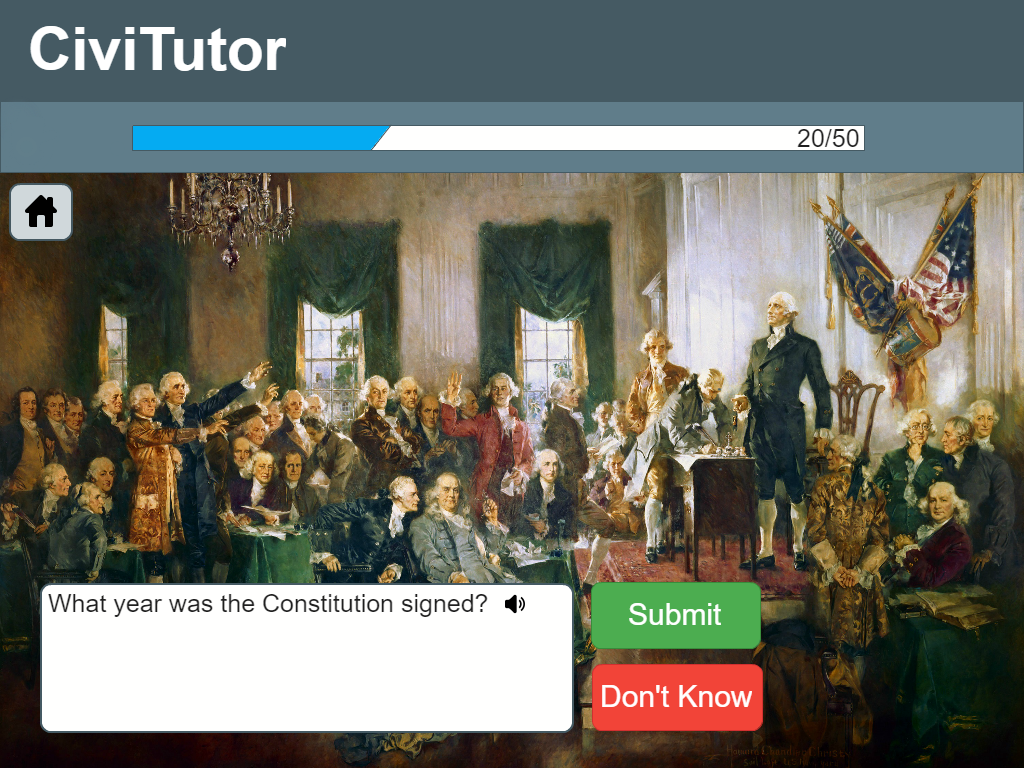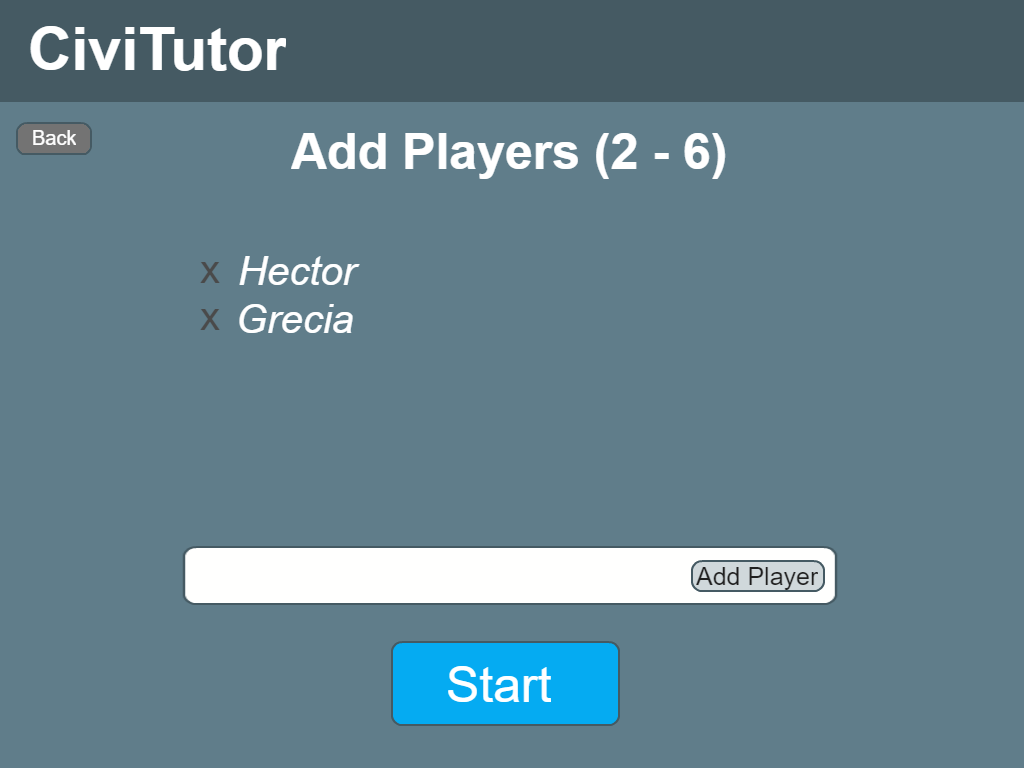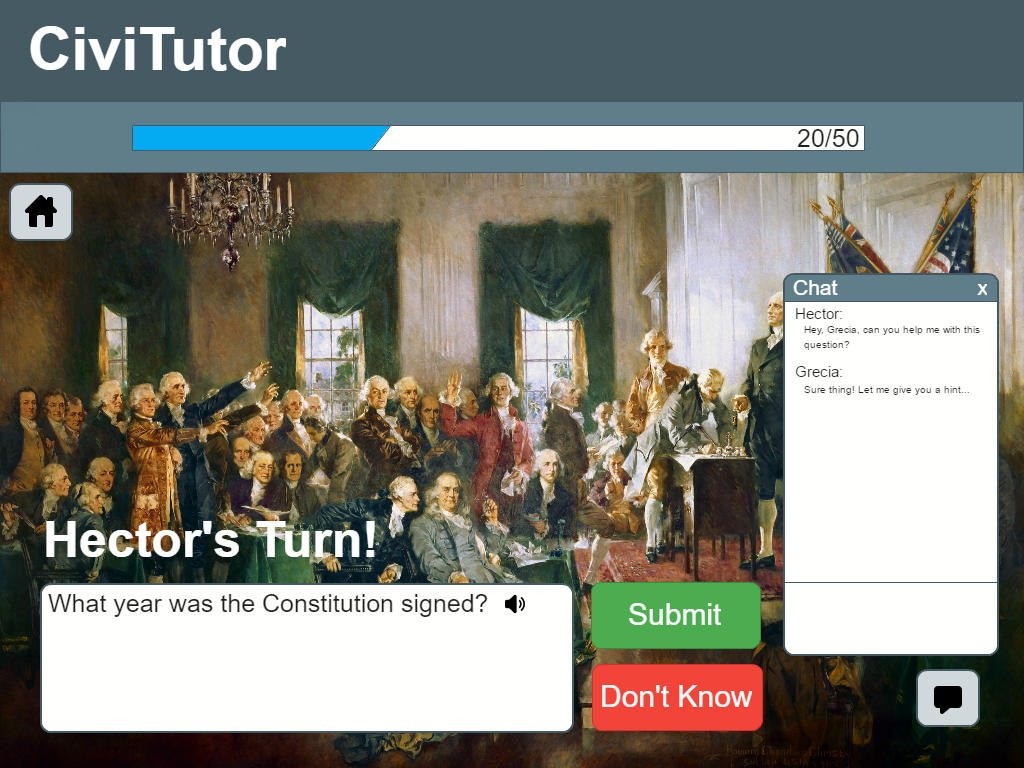The Problem
Immigrants currently make up over 13%* of the American population. Many of these immigrants will go through the long and difficult process of obtaining citizenship status. Part of the naturalization process requires that applicants must demonstrate an ability to read, write, and speak in ordinary usage in the English language. But certain immigrant groups may not be comfortable enough with the language to allow for a valid interview in English. Those with disabilities or seniors that have legally resided in the States for a certain length of time are allowed to take the civics portion of the exam in their native language. The problem is that current resources for non-English speakers are hard to navigate and are mostly just lists of questions and answers.
*Source: Migration Policy Institute (MPI) tabulation of data from the U.S. Census Bureau's 2010 and 2015 American Community Surveys (ACS), and 1970-2000 decennial Census.
The Solution
CiviTutor aims to revolutionize the process of studying for the civics test by turning the practice questions into a fun, interactive game, allowing for single and multiplayer sessions.


PRACTICE civics test questions through the game mode, which includes images and animations to make the experience more enjoyable and to help users memorize the information.


COLLABORATE with other users in the multiplayer mode and work through practice questions together.
Link to Full Interactive Prototype
The Process
User Research
In our user research we took three different approaches in order to gain an array of different perspectives surrounding our target group of elderly Spanish immigrants. We interviewed Spanish immigrants who have taken the test, reached out to community members who help immigrants prepare for the test, and released a survey to Spanish immigrants asking about how they prepare for the test.
Full Research Process Report
Prototype Design Process

Our initial design featured a discrete scoring system during the study sessions as well as a competitive aspect in multiplayer sessions. Each study session was independent of each other with no stored information about the user’s progress allowing for quick setup and play.
During our testing process, we used heuristic evaluations and usability testing. We conducted our heuristic evlauations using two different participants. After making changes in the prototype from the heuristic evaluations, we then conducted three sessions of usability testing. Our usability tests were conducted over two iterations of the prototype with our first usability test being conducted after our revisions from the heuristics evaluations followed by more revisions to the prototype before the last two usability tests.
Our final prototype features significantly more functionality while still being more simplistic and lightweight than our original prototype. Over the entire revision process drastic changes were made such as adding the user account aspect that stores progress over time. User control was also increased through options on every screen to quit or revert back to the prior screen to avoid leaving the user in a process funnel.

The Team
John Akers
Project Manager
Nick Chang
Prototype Designer
Victoria Lyndsay
User Researcher
Brynn Tweeddale
Technical Writer
The Poster

Icons from The Noun Project, created by Gregor Cresnar, Augusto Zamperlini, Gan Khoon Lay, and Murat Mustafa